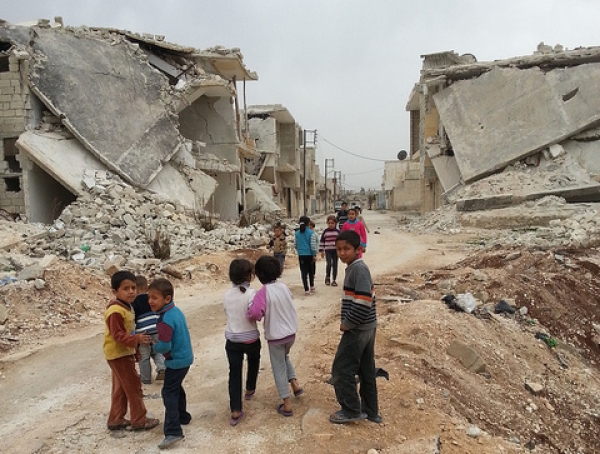The United Nations Office for the Coordination of Humanitarian Affairs (OCHA) produced a report entitled Compilation of Military Policy and Practice in 2017 to induce States, militaries and other actors to reflect on the humanitarian issue of explosive weapons’ utilisation. The focus includes air-delivered bombs, artillery projectiles, missiles and rockets, mortar bombs, and improvised explosive devices (IEDs) used in populated areas where civilians may be impacted by collateral damage. The term populated areas refers to all zones likely to include permanent or temporary concentrations of civilians.
Given the pattern of repeated harm to civilians, there are substantial concerns regarding the level of guidance provided by international humanitarian law (IHL) on risk assessment and reduction of explosive weapons’ impact, in addition to the interpretation and application of the relevant IHL rules by parties to conflict. The protection of civilians could be improved through compliance with the following rules: (i) the prohibition of direct attacks against civilians and civilian objects; (ii) the prohibition of disproportionate and other indiscriminate attacks; and (iii) the obligation to take all feasible precautions in attack and against the effects of attack to avoid, and in any event to minimize, incidental civilian harm.
Such weapons have the power to affect the entire surrounding area with due to their substantial blast and fragmentation radius. This impact can cause widespread injury, damage or death to anyone in the vicinity of the blast. Further problems can arise due to the scale of blast, their inaccuracy of delivery, the use of multiple firings and munitions, or a combination of multiple elements. Moreover, numerous factors can influence incidental harm such as inter alia local terrain, location of civilians, and weather conditions.
The consequences of these uncontrolled attacks, besides death and injury, are numerous and severe. The aftereffects include psychological trauma and displacement, post-traumatic stress disorder, destruction of housing and other essential infrastructure, damage to healthy child development, impediment to provision of life-saving humanitarian assistance, loss of education and livelihoods, and residual risk and threat of explosive remnants of war. Such physical and psychological harm requires emergency and specialist medical treatment, rehabilitation and psychosocial support services which is often unavailable, constrained, or both, due to hospitals’ damages and lack of healthcare personnel or medical supplies. Population displacement on other hand can lead to family separation, loss of livelihoods and support structures, inadequate shelter and supplies, major exposal to sexual and other forms of violence, exploitation, abuse and extremist recruitment.
From a military perspective, the use of uncontrolled force can lead to loss of civilian support for the mission, and consequently undermine longer-term political objectives and the successful conclusion of the mission.Thus, IHL requires that in the conduct of hostilities, constant care and precaution must be taken to spare the civilian population, individual civilians and civilian objects. This could mean, among other factors, restrictions on the attack location, on the timing, angle and axis of attack, or effective advance warning.
The International Security Assistance Force (ISAF) in Afghanistan and the African Union Mission in Somalia (AMISOM) deployed in the last two decades are examples of how military policies and practices succeeded in avoiding or limiting the use of explosive weapons in populated areas. ISAF commanders issued tactical directives to use the least destructive force for military purposes, while AMISOM developed and adopted an indirect fire policy that limited the use of mortars and other indirect fire weapons in populated areas.
Drawing on the lessons of ISAF and AMISOM, the OCHA finally proposes a future operational policy which should entail a thorough understanding of explosive weapons effects across a wider area and the resultant civilian risk, higher command authority, consideration of civilian presence status until proved otherwise, the advanced identification of “no-strike entities”, and tactical patience. Rational military policies comprise civilian casualty tracking mechanisms, collateral damage estimation tools and methodologies, and battle damage assessments aiming to mitigate incidental damage or injury to civilians and civilian objects. This includes concepts such as “minimum safe distances” and “risk estimate distances”, used to estimate the risk in terms of percent of friendly casualties that may result from an air attack against the enemy.
For further information, please visit:
http://www.inew.org/site/wp-content/uploads/2017/11/OCHA-Compilation-of-Military-Policy-and-Practice-2017.pdf
By Alice Vogliotti
Editing by Calum McLanachan




